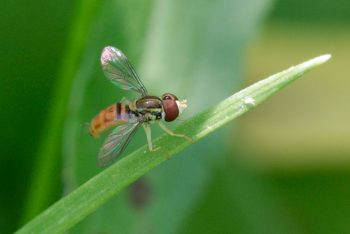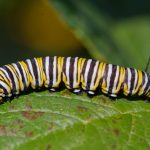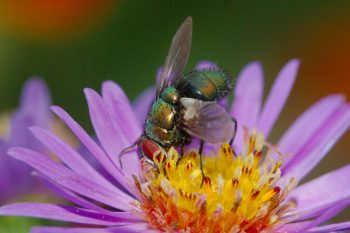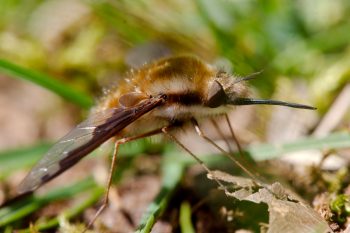This little fellow is only about 3/8 inch long but he’s as busy as any bee you’ll find. I originally labeled this as a bee but noticing that it only has two wings, I’ve changed the title to Tiny Fly. I’m guessing that it’s a diptera (di = two, and ptera = wings) — a true fly.
Tagged With: Fly
Eristalis transversa (Transverse Flower Fly)
I was taking photos of the black-eyed Susan flowers this evening when I spotted this little fly, a transverse flower fly (Eristalis transversa) visiting them. It wouldn’t stay still for very long and I had a hard time getting a good picture. Ideally it would be on top of the dark eye in the flower, but I wasn’t able to get that. I like the combination of colors that matches the flowers. These are pretty little flies and easily spotted in the garden. As flies go, I enjoy these about as much as any.
Insects
I went on a short outing this afternoon to the Agricultural Farm Park today and spent a little time wandering around the Master Gardener’s display garden. Mostly I photographed insects (and a few flowers). It was a pretty productive outing as far as insect photos go.
- Danaus plexippus (Monarch) Caterpillar
- Murgantia histrionica (Harlequin Bug)
- Papilio polyxenes asterius (Black Swallowtail)
- Euptoieta claudia (Variegated Fritillary)
- Allograpta obliqua (Common Oblique Syrphid)
- Diabrotica undecimpunctata (Spotted Cucumber Beetle)
I’m particularly happy with the oblique syrphid fly, as that’s the first one I’ve photographed. The black swallowtail is one we don’t see nearly as often as the eastern tiger swallowtail. I’ve seen harlequin bugs on occasion but not all that often. The same is true of the cucumber beetle.
Blow Fly
I took pictures of insects on aster flowers this evening. There was a bumble bee covered with little white dots that I’m pretty sure were eggs of some kind and didn’t bode well for the little critter. There was also a beautiful, metallic green, sweat bee (family Halictidae) and I got a picture of it as it lifted off the flower, which would have been amazing if it had been in better focus. The light was relatively low and I was using a flash with a white reflector for these pictures, which helped considerably. I also had a 25mm extension tube behind my 100mm macro lens, which helped me get that much closer.
Bombylius major (Greater Bee Fly)
I went out to take pictures last this morning, taking a short break from work. I had expected to take pictures of flowers of one sort or another but I happened to see this greater bee fly (Bombylius major) and was able to get pretty close to it and got a reasonable photo. It’s a fairly distinctive looking fly, with a hairy body. Differentiating flies from bees is generally easy if you can count their wings. The order Diptera, which is the flies, is so named because they have two wings (i.e. a single pair) instead of the normal insect wing count of four (two pairs).
Syrphid Fly on Marigold
I went out to take some pictures of flowers today. There are a few sitting on a table that I set up for Cathy to work on and that seemed like a nice place to sit and take pictures. I took some of a coral bells plant (Heuchera x ‘Blondie’) and then I noticed this syrphid file (Family Syrphidae) on a marigold blossom. There’s only so close I can get with my 100mm macro and I’d like some way to get closer. I’ve thought about buying a Canon MP-E 65mm f/2.8 lens that gives magnifications of 1 to 5 times, basically picking up where my current lens leaves off. It’s manual focus, but at that close range, focus is as much a matter of moving the camera closer or further away from the subject.











